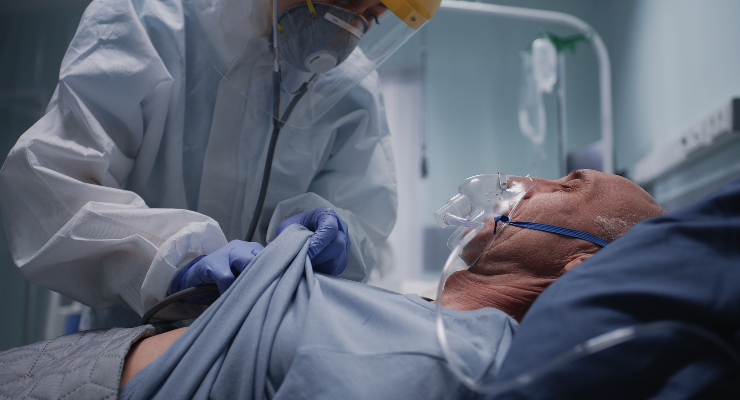
Yesterday’s headlines paint a story that badly needs an edit. Just take these examples, from across New South Wales, Victoria and Queensland:
- “NSW confirms 35 new cases of coronavirus”
- “Seven new cases — but it’s good news”
- “Overseas arrivals slashed”
- “Spotlight on illegal party linked to COVID cases”
- “Next few days ‘absolutely critical'”
Where are the people? The patients? Those “suffering from COVID”?
It seems, at both the federal and state level — and across all states — that those with COVID-19 are now simply “cases”; numbers that make up a daily tally. We have “cases” that are, locally and internationally, acquired. “Cases” of both the alpha and delta strain. But what about the people? Those suffering this insidious disease that is locking us in our homes and creating a formidable spike in the mental health of our children?
Queensland has 47 “active cases”, but it’s all “good news” — according to the premier — because tracers have assigned them to clusters.
The same goes for NSW because, of the 35 new “locally acquired cases” reported yesterday, 33 were linked to a known cluster and 20 were household contacts.
But aren’t they also people? Some of them dreadfully sick? Aren’t they the victims of this cruel monster?
“The total number of cases in NSW since the beginning of the pandemic is 5790,” NSW Health reported yesterday. And 58,373 tests were conducted in the past 24 hours. Yippee. But doesn’t that mean the families and friends of 5790 people — in that state alone — have had to confront an awful reality in the past 12 months?
And yet we reduce them to “cases”. They are not. They are elderly men and women, in aged care facilities, where workers have not yet been vaccinated. Workers, colleagues were told yesterday, who have now been carried from their homes to a hospital. Pubic servants and accountants, tradespeople and students and retired mums and dads and nans and pops.
And yet our elected leaders can only talk about tallies and cases and clusters and shutdowns, borders and arrivals, vaccines and tests. When did this remarkable lack of empathy become the centrepiece of daily COVID briefings? When did we stop wondering about those hundreds of Australians, lying in a bed, fighting off a disease that has killed millions and millions and millions.
When did we stop caring?
Away from those daily political tallies, every “case” brings immeasurable heartbreak. Businesses are closing. Mortgages are slipping. Homelessness is escalating. Suicide rates, among children, are mind-numbing. Doctors’ waiting lists are full. Psychologists’ books are closed. Coping with loneliness has become an attribute we don’t all boast.
Our politicians need to see every case they talk about as a person, living with COVID and the fear and uncertainty it brings.
We need to know the effect of people wearing hazmat suits through aged care homes, the suffering of those lying in a hospital bed today, and the impact on our children as they get ready to return to school.
We need to talk about people, not cases. Like the 47 people in Queensland today, with COVID. All of them are in hospital. Thankfully, none at the moment are in ICU.
We need to talk about the nurses caring for them, and the families unable to visit them. We need to know what this ruthless virus rips from their bodies. And that will drive vaccine rates higher than any of the daily lectern politicking on display this week.
Data is crucial in the fight against a disease like COVID, and everything from sewage surveillance detection information to building-linked COVID clusters are helping us stay ahead in this 2021 fight. But in the tsunami of facts and figures, we shouldn’t lose sight of those at the centre of it.








Crikey is committed to hosting lively discussions. Help us keep the conversation useful, interesting and welcoming. We aim to publish comments quickly in the interest of promoting robust conversation, but we’re a small team and we deploy filters to protect against legal risk. Occasionally your comment may be held up while we review, but we’re working as fast as we can to keep the conversation rolling.
The Crikey comment section is members-only content. Please subscribe to leave a comment.
The Crikey comment section is members-only content. Please login to leave a comment.